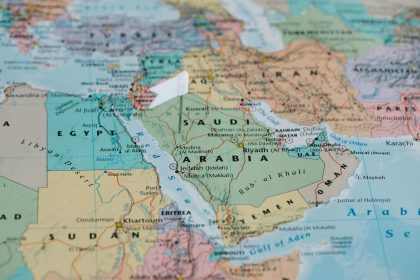The Evolution of the Qatari Monarchy: A Historical Perspective
Introduction
The state of Qatar, a small but strategically significant country located on the northeastern coast of the Arabian Peninsula, has undergone remarkable transformations over the centuries. Central to this evolution is the Qatari monarchy, which has played a pivotal role in shaping the nation’s political landscape, economy, and society. This article delves into the historical trajectory of the Qatari monarchy, tracing its roots, significant milestones, and the contemporary implications of its evolution.
Early History and Foundation
Qatar’s history can be traced back to ancient times, with evidence of human habitation dating back to the Stone Age. The region has seen various civilizations, including the Dilmun civilization, known for its trade and maritime prowess. However, Qatar’s modern history begins in the 18th century, when the Al Thani family emerged as a significant political force.
In 1765, the Al Thani family settled in Qatar, establishing themselves as a prominent tribe. The family’s rise to power was marked by their ability to navigate the complex tribal and political dynamics of the region. In 1878, Sheikh Mohammed bin Thani became the ruler of Qatar, marking the official beginning of the Al Thani dynasty. Under his leadership, Qatar witnessed the consolidation of power and establishing a more structured governance system.
The British Protectorate Era
The late 19th and early 20th centuries were characterized by increasing European influence in the Arabian Peninsula. In 1916, during World War I, Qatar signed a treaty with the British government, effectively making it a British protectorate. This agreement allowed the British to control Qatar’s foreign affairs while granting the local monarchy autonomy in domestic matters.
Under Sheikh Ali bin Abdullah Al Thani, who ruled from 1913 to 1949, Qatar began to develop its infrastructure and economy. The discovery of oil in the 1930s transformed the economic landscape, leading to greater British involvement in the region. The monarchy navigated this period with caution and ambition, realizing the potential wealth that oil could bring while maintaining local governance.
Modernization and Independence
The post-World War II era marked a significant turning point for Qatar. The discovery of vast oil reserves led to an economic boom, which provided the monarchy with the resources to modernize the country. In 1950, Sheikh Ali bin Abdullah was succeeded by his son, Sheikh Ahmed bin Ali Al Thani, who embraced modernization efforts, focusing on education, healthcare, and infrastructure development.
As Qatar’s wealth grew, so did its aspirations for independence. In 1968, the British government announced its intention to withdraw from its commitments in the Gulf region. This resulted in negotiations among the Gulf states, but Qatar opted for independence. On September 3, 1971, Qatar officially became independent, with Sheikh Khalifa bin Hamad Al Thani assuming power. His rule marked a shift towards greater national identity and sovereignty.
The Khalifa Era and Economic Diversification
Sheikh Khalifa’s reign (1971-1995) was characterized by significant economic development and modernization. Under his leadership, Qatar established its National Oil Company, initiated large-scale infrastructure projects, and invested heavily in education and healthcare. The Qatari monarchy recognized the need for economic diversification to reduce reliance on oil and gas revenues.
In 1995, Sheikh Hamad bin Khalifa Al Thani, Khalifa’s son, ascended to the throne following a bloodless coup. His reign marked a transformative change, focusing on modernization, economic diversification, and international engagement. Sheikh Hamad implemented a series of reforms aimed at democratizing the political system, including establishing a constitution in 2004 that aimed to enhance citizens’ role in governance.
The Arab Spring and Regional Dynamics
The Arab Spring of 2011 profoundly impacted the Middle East’s political landscape, including Qatar. While the monarchy managed to maintain stability, it faced the challenge of balancing popular demands for reform with the need to uphold traditional authority. In response to regional unrest, the Qatari leadership increased public spending and launched initiatives to improve living standards and public services.
During this period, Qatar emerged as a significant player in regional politics, leveraging its wealth and strategic position to influence events across the Arab world. The Al Jazeera network, founded in 1996, was crucial in shaping public discourse and providing a platform for diverse voices. Qatar’s foreign policy became increasingly assertive, supporting various movements and regimes during the Arab Spring, which positioned the monarchy as a key player in regional geopolitics.
The Rise of Sheikh Tamim and Contemporary Developments
In 2013, Sheikh Hamad abdicated the throne in favor of his son, Sheikh Tamim bin Hamad Al Thani. Sheikh Tamim’s ascension marked a continuation of the modernization agenda while addressing the challenges of regional tensions. The Gulf Cooperation Council (GCC) crisis of 2017, which saw several nations, including Saudi Arabia and the UAE, cutting diplomatic ties with Qatar, tested the resilience of the Qatari monarchy.
Sheikh Tamim responded to the crisis, focusing on self-sufficiency and economic resilience. The blockade prompted Qatar to enhance its food security, develop new trade routes, and invest in domestic production. The monarchy also sought to strengthen its international alliances, maintaining relationships with countries like Turkey and Iran while engaging in diplomatic efforts to resolve the crisis with its neighbors.
Conclusion
The evolution of the Qatari monarchy reflects a complex interplay of tradition, modernization, and geopolitical dynamics. From its early tribal roots to its contemporary status as a significant player in regional and global affairs, the monarchy has adeptly navigated the challenges and opportunities of changing times.
As Qatar continues to evolve, the monarchy remains a central institution in shaping the nation’s identity, governance, and future trajectory. The commitment to modernization, diversification, and international engagement will likely define the monarchy’s role in the coming years as Qatar seeks to carve out a unique position on the world stage while preserving its rich cultural heritage. The Qatari monarchy’s historical journey is not just a story of power and governance; it is a narrative of resilience, adaptation, and ambition, reflecting the aspirations of a nation poised for continued growth and development.


